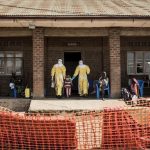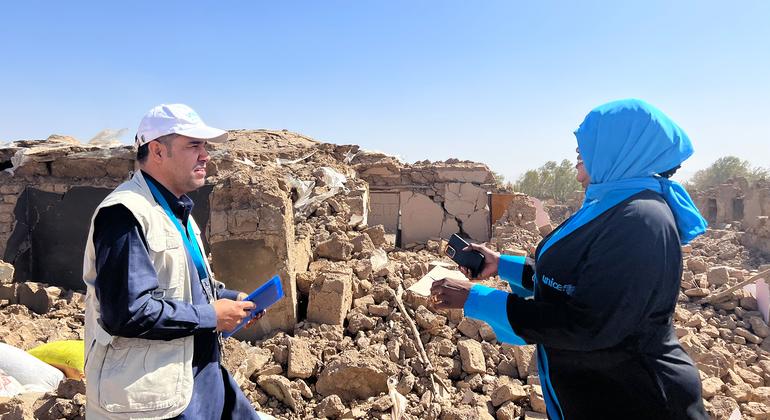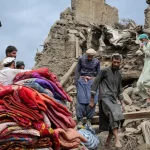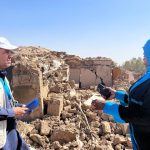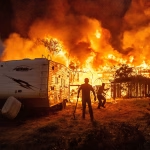On August 31, 2025, a devastating 6.0-magnitude earthquake struck eastern Afghanistan, leaving a trail of destruction in its wake. The hardest-hit regions—Kunar, Nangarhar, Laghman, and Nuristan provinces—experienced widespread devastation, with entire villages reduced to rubble. The quake claimed the lives of nearly 3,000 individuals and injured over 4,000 more. The majority of the affected homes were constructed from mud and stone, which, combined with the region’s steep valleys and soft sedimentary ground, led to catastrophic structural failures. The United Nations High Commissioner for Refugees estimated that more than 500,000 people were affected, with many others displaced. In the aftermath, survivors face dire conditions, including lack of shelter, food, clean water, and medical care. Humanitarian organizations and governments worldwide are calling for immediate and sustained international aid to address the urgent needs of those impacted.
- The Scale of the Disaster
- Challenges in Aid Delivery
- International Response
- The Role of the International Community
- Frequently Asked Questions
- What caused the devastating earthquake in Afghanistan?
- How can I help the earthquake survivors in Afghanistan?
- What are the immediate needs of the earthquake survivors?
- How are women and children affected by the earthquake?
- What is being done to address the long-term needs of the affected communities?
- Conclusion
The Scale of the Disaster
Widespread Destruction
The earthquake’s epicenter was located in the Dewagal Valley of Kunar Province, an area characterized by its mountainous terrain and remote villages. The quake’s shallow depth and the region’s construction materials contributed to the extensive damage. In many communities, entire families perished as their homes collapsed while they slept. For instance, Ahmad Khan Safi, a local farmer, lost 22 relatives and 300 livestock in the disaster. Ghulam Rahman, another resident, buried much of his family on donated land due to the overwhelming number of casualties. Infrastructure, including roads, bridges, schools, and water sources, was destroyed, displacing many and raising urgent health concerns.
Humanitarian Crisis
The United Nations estimates that around 500,000 people, over half of them children, have been affected by the earthquake. Torrential rains and landslides have exacerbated the situation, making survival increasingly difficult for those now living in the open. Survivors are calling on the government for relocation aid and support to rebuild their lives far from the traumatic epicenter. The lack of access to basic necessities has led to a heightened risk of disease outbreaks and malnutrition among the displaced populations.
Challenges in Aid Delivery
Infrastructure Limitations
The region’s mountainous terrain and damaged infrastructure have severely hindered relief efforts. Many affected areas are accessible only by foot or via narrow, treacherous paths, making it difficult for aid organizations to deliver supplies promptly. The destruction of roads and bridges has further isolated communities, delaying the arrival of essential resources such as food, water, and medical aid.
Cultural and Logistical Barriers
Cultural norms and logistical challenges have also impeded the effectiveness of humanitarian assistance. The Taliban’s restrictions on female aid workers have limited the capacity of organizations to provide comprehensive healthcare services, particularly to women and children. The World Health Organization (WHO) has urged the Taliban to lift these restrictions to facilitate the delivery of critical medical care. Additionally, the ongoing conflict and political instability in the region have complicated coordination efforts among international aid agencies and local authorities.
International Response
United Nations Initiatives
In response to the disaster, the United Nations Office for the Coordination of Humanitarian Affairs (OCHA) has released $10 million in emergency funding to support relief operations. These funds are being used to provide food, water, shelter, and medical supplies to affected communities. The UN Refugee Agency (UNHCR) is also mobilizing resources to assist displaced populations and is working to construct temporary shelters to accommodate those who have lost their homes.
Government Contributions
Several countries have pledged humanitarian assistance to support the relief efforts. Canada announced a $3 million contribution to provide emergency relief, including food, water, and medical supplies. Ireland has committed €500,000 to the International Federation of the Red Cross and Red Crescent Societies to support emergency food, water, healthcare, and other humanitarian aid for survivors. The European Union has approved €1 million in humanitarian emergency funding to address the most urgent needs of the affected population.
Non-Governmental Organizations
Non-governmental organizations (NGOs) are playing a crucial role in delivering aid to affected communities. Organizations such as CARE, Human Appeal, and Handicap International have launched emergency response operations, focusing on providing food, medical care, and shelter to survivors. These NGOs are also working to raise awareness about the situation and mobilize additional resources to support ongoing relief efforts.
The Role of the International Community
Urgency of Global Solidarity
The scale of the disaster in Afghanistan requires a coordinated and sustained international response. Humanitarian organizations and governments worldwide must collaborate to ensure that aid reaches those in need promptly and effectively. This includes providing financial support, deploying personnel, and facilitating the delivery of essential supplies. The international community must also advocate for the lifting of restrictions that hinder the provision of aid and work to address the underlying causes of vulnerability in the region.
Long-Term Recovery and Resilience
While immediate relief efforts are critical, long-term recovery and resilience-building are essential to help communities rebuild and prepare for future disasters. This involves investing in infrastructure development, strengthening healthcare systems, and promoting economic recovery. Additionally, efforts should be made to address the root causes of vulnerability, such as poverty, gender inequality, and lack of access to education and healthcare.
Frequently Asked Questions
What caused the devastating earthquake in Afghanistan?
The earthquake was caused by tectonic activity along the fault lines in eastern Afghanistan’s mountainous region. The shallow depth of the quake, combined with the region’s construction materials and terrain, contributed to the extensive damage.
How can I help the earthquake survivors in Afghanistan?
You can support relief efforts by donating to reputable humanitarian organizations working in Afghanistan. These organizations are providing food, water, medical care, and shelter to those affected by the disaster.
What are the immediate needs of the earthquake survivors?
The immediate needs include food, clean water, medical supplies, shelter, and sanitation facilities. There is also a need for psychological support to help survivors cope with the trauma of the disaster.
How are women and children affected by the earthquake?
Women and children are among the most vulnerable groups in the aftermath of the earthquake. Many have lost their homes and family members and are at increased risk of exploitation and abuse. Restrictions on female aid workers have further limited access to healthcare and support services for women and children.
What is being done to address the long-term needs of the affected communities?
Long-term recovery efforts focus on rebuilding infrastructure, restoring livelihoods, providing education, and strengthening healthcare systems. International organizations and local authorities are working together to support sustainable development and resilience-building in affected communities.
Conclusion
The earthquake that struck eastern Afghanistan on August 31, 2025, has resulted in a humanitarian crisis of unprecedented scale. The international community must respond with urgency and solidarity to address the immediate needs of survivors and support long-term recovery efforts. By providing financial assistance, deploying resources, and advocating for the lifting of restrictions that hinder aid delivery, we can help the people of Afghanistan rebuild their lives and communities. The path to recovery will be challenging, but with coordinated global efforts, it is possible to restore hope and resilience to those affected by this devastating disaster.






